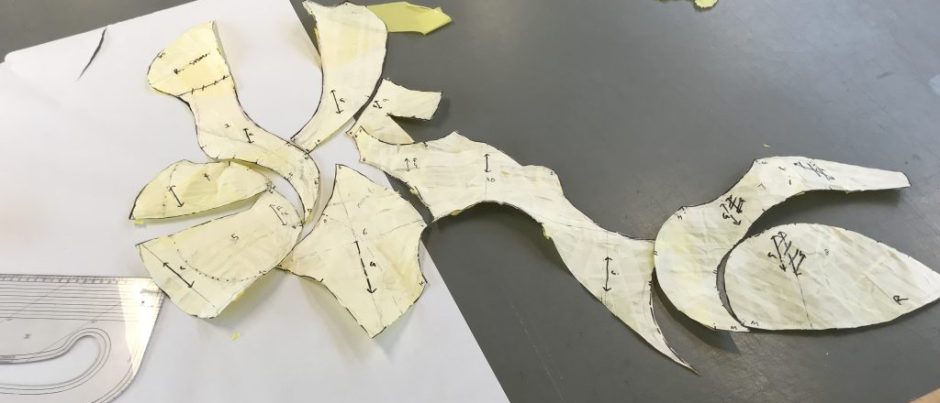Poster Display Data
Shown below is a photo of the poster display at the end of the one week period of display (9th December to 13th December – the last week of the autumn term 2024), in J107 (the costume studio).

8 students interacted with the poster across one week, all of them, as far as is possible to tell, answering both parts of the display. The poster shows the interactions listed below:
- Did you take a photo of this suppliers poster?: 8
- What do you prefer?:
- Printed leaflets: 2
- Downloadable documents: 0
- Posters: 6
Digital Resources Traffic Data
Data on the traffic to the relevant costume technical moodle pages (Costume: Materials and Equipment Moodle page, which switched part way through the term to a Padlet) shows that across the Autumn term 2024 (30 September to 13th December), 48 visits were made by 19 viewers to these resources.
If we divide this by the number of weeks the data reflects (11), it can be compared to the data taken across one week at the end of term. More specific data on the week in question was not possible to access, although this would have been a more accurate comparison with the other two data sets.
19 viewers across 11 weeks = 1.7 users per week
79 viewers across 11 weeks = 7.1 views per week
It is perhaps best to use the number of ‘users’ here, on the assumption that the viewing of a resource would happen once. Similarly, the students who stuck green dots of the interactive display poster are likely to have looked at the resource multiple times since first photographing it, but I have not collected data on this – nor have I collected data on the number of times a student has used a handout. This would be a useful next step.
Physical Handout Data
No Costume technicians, including myself, reported handing out any suppliers lists during this period of time, including sustainable suppliers.
Handouts provided: 0
Evaluation
I will use a similar visualisation as I did for my focus group to compare this data, isolating the qualitative element that data was collected on (active engagement). I rounded the numbers to whole numbers to simplify the visualiation:



Analysis
However, when taken in conjunction with the qualitative data from my focus group, the conclusion here is clear – that the primary way of encouraging students to utilise sustainable resources, and consequently move towards more sustainable practices, is to create things to interact with in the space, rather than hand-outs, or downloadable documents.
